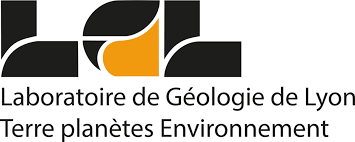
12h-14h
Understanding fluid-rock interaction processes and associated mass transfers in the Earth’s crust is significant for several reasons. In subduction zones for instance, fluids released from the subducted slab trigger earthquake rupture, are responsible for magma generation and arc volcanism, the formation of ore deposits and the global geochemical cycles between crust and mantle. Despite recent advances in experimental petrology and numerical modelling, it remains challenging to quantify mass transfers, because detailed information regarding the evolution of the mechanical properties of the rocks during fluid-rock interaction at depth (e.g. density and volume) are lacking. Modelling techniques used to estimate the pressure-temperature-composition of a rock are based on thermodynamic analysis of a system with constant mass and therefore neglect all chemical and physical changes caused by (de-)hydration reactions. Unfortunately, these assumptions do not tackle the problem on the chemical alteration of a rock/mineral by an external fluid, i.e. metasomatism.
At lower crustal conditions, the Bergen Arcs in Norway represents an exceptional area to study the process of hydration reaction where the original granulite is partially hydrated into eclogite and amphibolite-facies rock. Bulk rock compositions show that the concentration of major and trace element (+ Fe3+) does not change across the three metamorphic facies except a gain in LOI and this, even if they all share the same foliation. Using mass balance equation and thermodynamic modelling, eclogite and amphibolite-facies rock can be made at the same temperature and XCO2, balance densities and solid volume variation, but differ by 10 kbar. This challenge the way we use to interpret metamorphic facies and the associated geodynamic reconstruction.
In diagenetic conditions, dolomitization is an important process that occurs worldwide and forms conventional reservoirs associated with ore deposits, hydrocarbon accumulation, and are efficient reservoirs for carbon sequestration. Unfortunately, fluid overpressure in sedimentary rocks is a complex and important phenomenon as it is often leading to fracture development that strongly alters reservoir quality. One of the common patterns that indicates that the paleo fluid-pressure reached lithostatic values are hydrothermal dolomite breccias. Hydrothermal dolomite breccias are observed in the Mail Arrouy Anticline located in the Northern Pyrenean zone in France. The investigation of the reaction front between the hydrothermal dolomite breccias and the original sedimentary breccia using surface analysis, textural analyses (SEM-EBSD) and numerical modelling (ELLE) allow to present a case study that challenges the classical overpressure origin of hydrothermal dolomite breccias.
